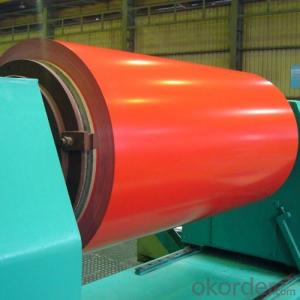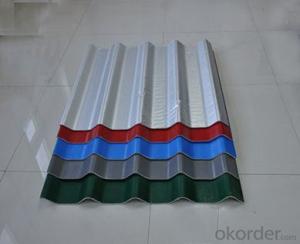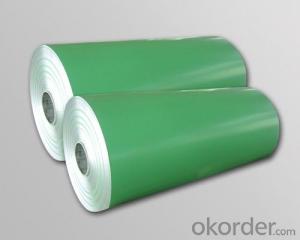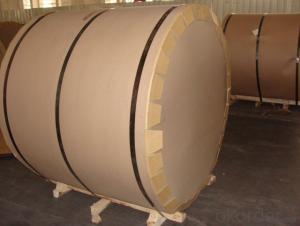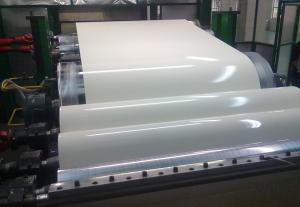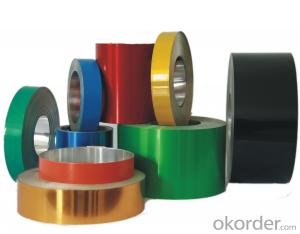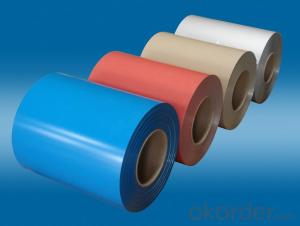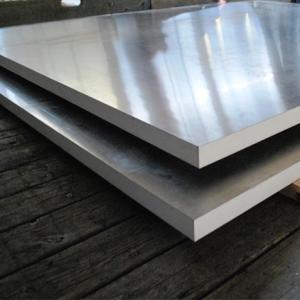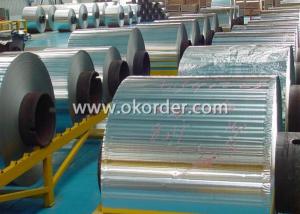OEM Colored Aluminum Sheets - Coated Aluminium Coil for Roofing-AA1xxx
- Loading Port:
- China Main Port
- Payment Terms:
- TT OR LC
- Min Order Qty:
- -
- Supply Capability:
- -
OKorder Service Pledge
OKorder Financial Service
You Might Also Like
Product Description:
1 Specifications of PE Coated Aluminum Coil/Sheet
Alloy | AA1050,AA1060, AA1070, AA1100, AA3003, AA3004, AA3005, AA3105, AA5005, AA5052, AA5754, AA5083, AA8011 |
Temper: | H12, H14, H16, H18, H22, H24, H26, H32,HO, F |
Thickness: | 0.10-4.0mm |
Width: | 10mm- 2000mm |
Coating | PE(Polyester) |
Painting Thickness | Standard 16-25 microns, max 40 microns |
Color | Acording to Ral colors or customer’s samples |
Standard: | GB/T17748-1999, ASTM, ISO, EU standard |
Special Specification is available on customer’s requirement | |
PE(polyester) Coating
PE(polyester) coating:high molecular polymer as monomer and addition of alkyd, is an UV-resistant coating. It can be classified matt and glossy according to coating gloss. The compact molecule structure, makes paint surface luster and smooth,which assure good printing on the panel surface. With an warranty of 8-10 years for weather resistance, it is specially applied for internal decoration and sign board.
2 Usage/Applications of PE Coated Aluminum Coil/Sheet
Our company's PE Coated Aluminum Coil/Sheet have been widely used in the fields of construction and decoration(garage doors, ceiling etc.), electronic appliances, lighting decoration, air-condition air pipe, sanwich panels and drainage, etc.
- Q: Which kind of glue is best for bonding aluminum sheets?
- I advice you to use AB glue to bond aluminum sheets, acylic acid AB glue is better than 502 in bonding aluminum sheets, Gelianghao XSSS-290AB glue sold in hardware store can directly permeate into the surface of aluminum sheets and bond the sheets tightly.
- Q: Aluminum and oxygen gas react to produce aluminum oxide
- Aluminium oxide is Al2O3, so there are 3 oxygen atoms for every 2 aluminium atoms. Divide 75 by the relative atomic mass of oxygen (15.9994). That is proportional to the number of oxygen atoms. Then divide by 3 and multiply by 2. This gives a number proportional to the number of aluminium atoms. Then multiply this by the relative atomic mass of aluminium (26.981529) to give the mass of aluminium required in grams.
- Q: What are the primary components that make up aluminum sheets?
- <p>Aluminum sheets are primarily composed of aluminum, which is a lightweight and malleable metal. They are made from pure aluminum or aluminum alloys, which may include small percentages of other elements to enhance specific properties such as strength, corrosion resistance, or workability. Common alloying elements include copper, magnesium, manganese, silicon, and zinc. The exact composition varies depending on the specific grade of aluminum and its intended use. Pure aluminum is soft and not commonly used for sheets; instead, alloys are preferred for their improved strength and durability.</p>
- Q: Can aluminum sheets be used in marine environments?
- Yes, aluminum sheets can be used in marine environments. Aluminum is a commonly used material in marine applications due to its excellent corrosion resistance properties and lightweight nature. It can withstand the harsh conditions of saltwater, making it suitable for boat building, marine structures, and other marine-related uses.
- Q: Can aluminum sheets be used for reflective insulation?
- Yes, aluminum sheets can be used as reflective insulation. Aluminum has excellent reflective properties, allowing it to reflect heat and light effectively. This makes it a suitable material for insulating applications where reflecting radiant heat is desired, such as in roofs, walls, or attics.
- Q: Can aluminum sheets be anodized with custom designs?
- Yes, aluminum sheets can be anodized with custom designs. Anodizing is an electrochemical process that enhances the natural oxide layer on the surface of aluminum, making it more durable and corrosion-resistant. During this process, different patterns and designs can be added to the aluminum sheet by masking off certain areas and exposing others to the anodizing solution. This allows for custom designs to be etched or dyed onto the surface, creating unique and personalized finishes. Anodized aluminum sheets with custom designs are commonly used in various industries, including architecture, automotive, and electronics, to achieve aesthetic and functional requirements.
- Q: how to make aluminum products bright? How to polish or clean the products punch formed by 0.3mm aluminum sheet?
- you can try to grind it with magnetic grinder.
- Q: What are the safety concerns to be aware of when handling aluminum sheets?
- <p>When working with aluminum sheets, there are a few safety concerns to consider. First, aluminum dust can be a respiratory hazard, so it's important to use proper ventilation and personal protective equipment like masks. Second, sharp edges can cause cuts; always handle aluminum sheets with gloves and proper tools. Additionally, aluminum is a good conductor of electricity, so avoid contact with live electrical wires. Lastly, when cutting or shaping aluminum, eye protection is crucial due to the risk of flying debris. Always follow safety guidelines specific to your workplace and the tools you are using.</p>
- Q: Are the aluminum sheets suitable for manufacturing heat exchangers?
- Yes, aluminum sheets are suitable for manufacturing heat exchangers due to their excellent thermal conductivity, lightweight nature, and corrosion resistance.
- Q: Can aluminum sheets be used for lithographic printing?
- Yes, aluminum sheets can be used for lithographic printing. Lithographic printing, also known as offset printing, relies on the principle that oil and water do not mix. Aluminum plates are used as the printing surface in lithography because they can retain an image when treated with a combination of chemicals. The image areas attract ink, while the non-image areas repel it. This allows for high-quality and precise printing.
Send your message to us
OEM Colored Aluminum Sheets - Coated Aluminium Coil for Roofing-AA1xxx
- Loading Port:
- China Main Port
- Payment Terms:
- TT OR LC
- Min Order Qty:
- -
- Supply Capability:
- -
OKorder Service Pledge
OKorder Financial Service
Similar products
Hot products
Hot Searches
Related keywords
